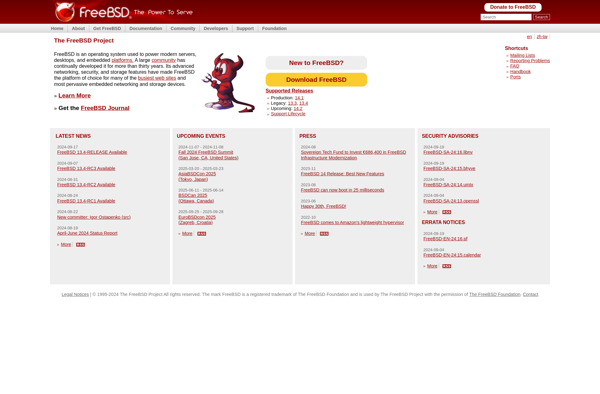IBM AIX

IBM AIX: Proprietary Unix OS for POWER Architectures
IBM AIX is a proprietary version of the Unix operating system developed by IBM for its POWER architecture servers and workstations. It is highly scalable and reliable, making it well-suited for business-critical applications and workloads.
What is IBM AIX?
IBM AIX (Advanced Interactive eXecutive) is a proprietary Unix-based operating system developed and optimized by IBM for its POWER architecture-based systems, including Power Systems servers and Systems p workstations. AIX is designed to be a highly scalable, reliable, and securable operating system suitable for handling business-critical workloads and applications.
Some key features and capabilities of AIX include:
- PowerVM virtualization allowing multiple AIX virtual machines to run on the same physical server
- Advanced security features like Trusted Execution and role-based access control
- High availability and redundancy features like Live Partition Mobility and high availability clustering
- Support for running in cloud environments like IBM Cloud or on-premises clouds
- Compatibility and integration with other IBM software like IBM i, IBM Cloud Paks, and Watson Studio
AIX incorporates powerful administration tools, utilities, and interfaces to enable performance tuning, troubleshooting, automation, and centralized management of systems running AIX and other IBM platform software.
The latest release of AIX version 7.2 adds additional functions for managing cloud workloads, integrating open source tools, and new availability features like Concurrent Firmware Updates. It continues to leverage the reliability, scalability and security of both AIX and IBM POWER hardware.
IBM AIX Features
Features
- Highly scalable and reliable
- Optimized for IBM POWER architecture servers and workstations
- Supports a wide range of enterprise-level applications and workloads
- Integrates with other IBM software and hardware products
- Offers advanced security and virtualization capabilities
- Provides robust system management and administration tools
Pricing
- Subscription-Based
Pros
Cons
Reviews & Ratings
Login to ReviewThe Best IBM AIX Alternatives
Top Os & Utilities and Unix-Based Operating Systems and other similar apps like IBM AIX
Here are some alternatives to IBM AIX:
Suggest an alternative ❐Ubuntu

Debian

Puppy Linux

Manjaro Linux

Deepin

FreeBSD

OpenSUSE

Pop!_OS

Red Hat Enterprise Linux

NixOS

OpenBSD
